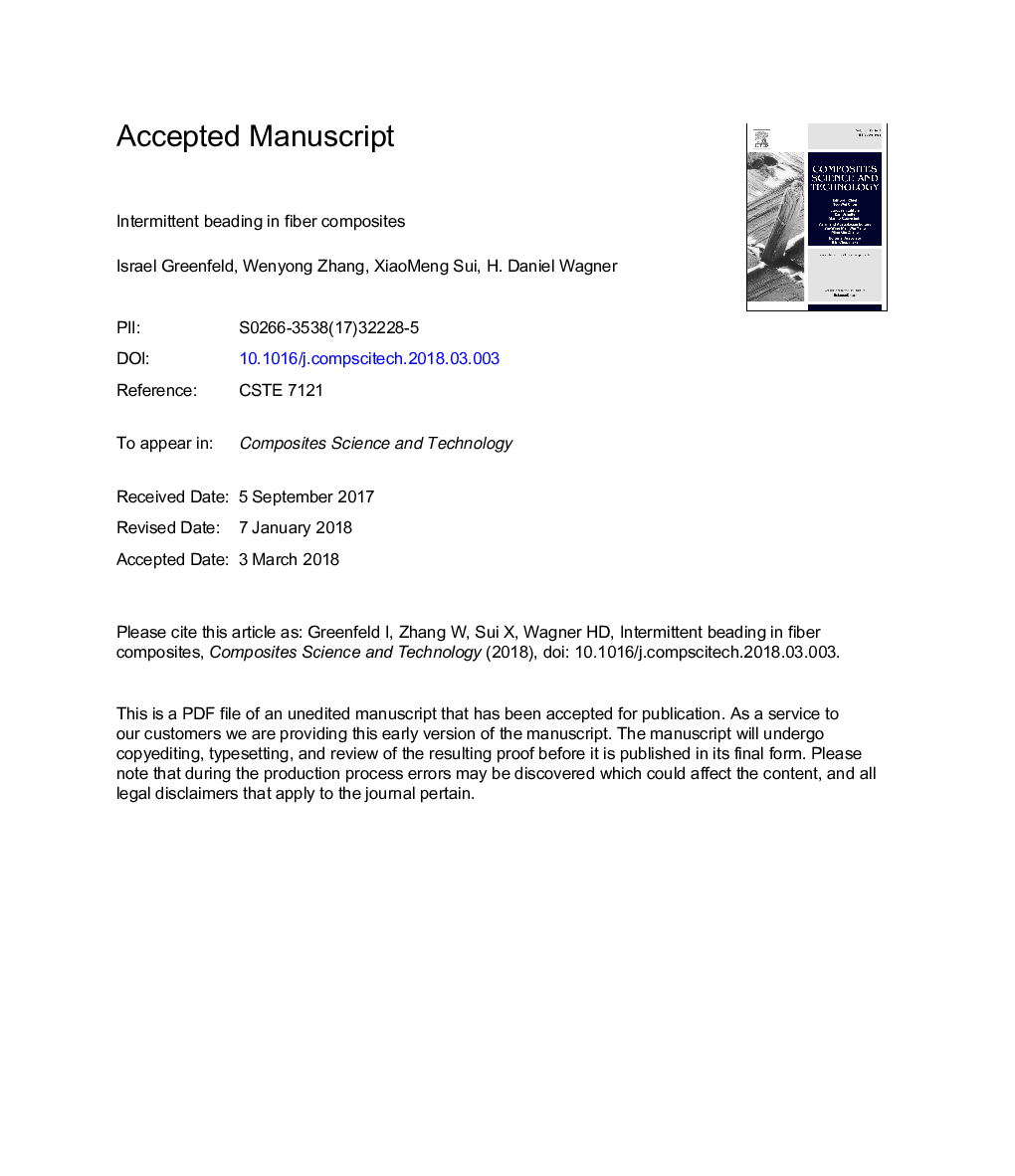| Article ID | Journal | Published Year | Pages | File Type |
|---|---|---|---|---|
| 7214463 | Composites Science and Technology | 2018 | 27 Pages |
Abstract
Simultaneous improvement of strength and toughness is a challenge in composite materials, as an improvement in one is generally at the expense of the other. The filler-matrix interface has a crucial role in such improvement. It appears that modification of the interfacial structure/geometry may have wider possibilities and benefits than the classical chemical bonding approach. Using a model glass-epoxy fiber-reinforced composite, we modified the regular cylindrical fiber-matrix interface by applying intermittent epoxy beads along the fiber, taking advantage of the Plateau-Rayleigh liquid instability phenomenon. Under load, the beads serve as fiber anchors in the matrix, thus exploiting the fiber strength to its maximum. During fracture, the pullout of beads through the matrix appears to dissipate more plastic deformation energy compared to the pullout of regular fibers. Fragmentation tests of beaded fibers in epoxy matrix demonstrate these failure mechanisms; single-bead fiber pullout tests with different bead sizes and surface treatments provide strength and toughness data that substantiate this approach. The concept of intermittent beading has ample possibilities for optimization. It is also scalable and therefore practical.
Related Topics
Physical Sciences and Engineering
Engineering
Engineering (General)
Authors
Israel Greenfeld, Wenyong Zhang, XiaoMeng Sui, H. Daniel Wagner,
